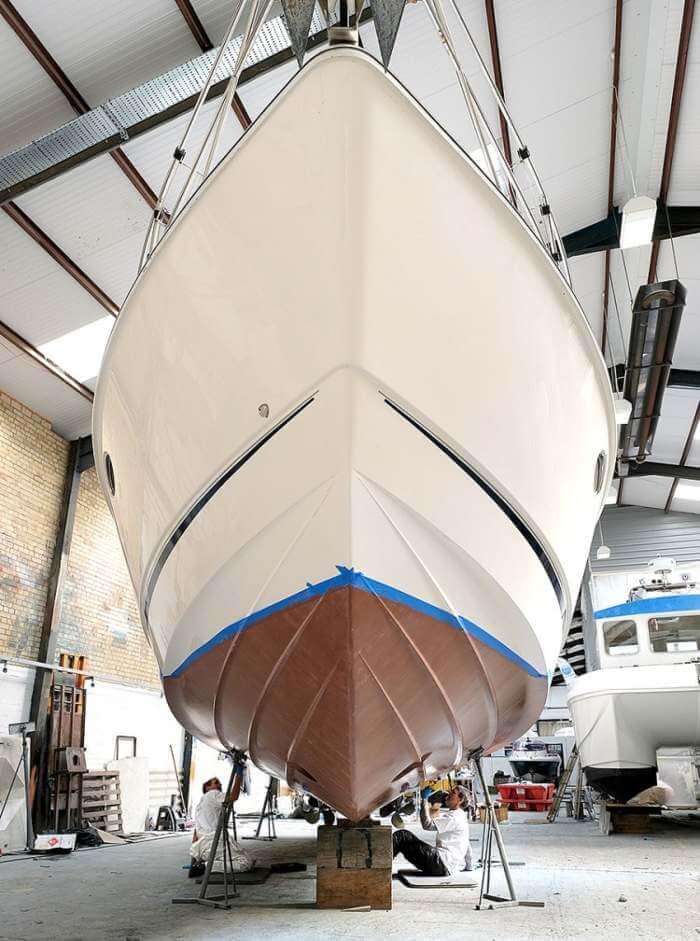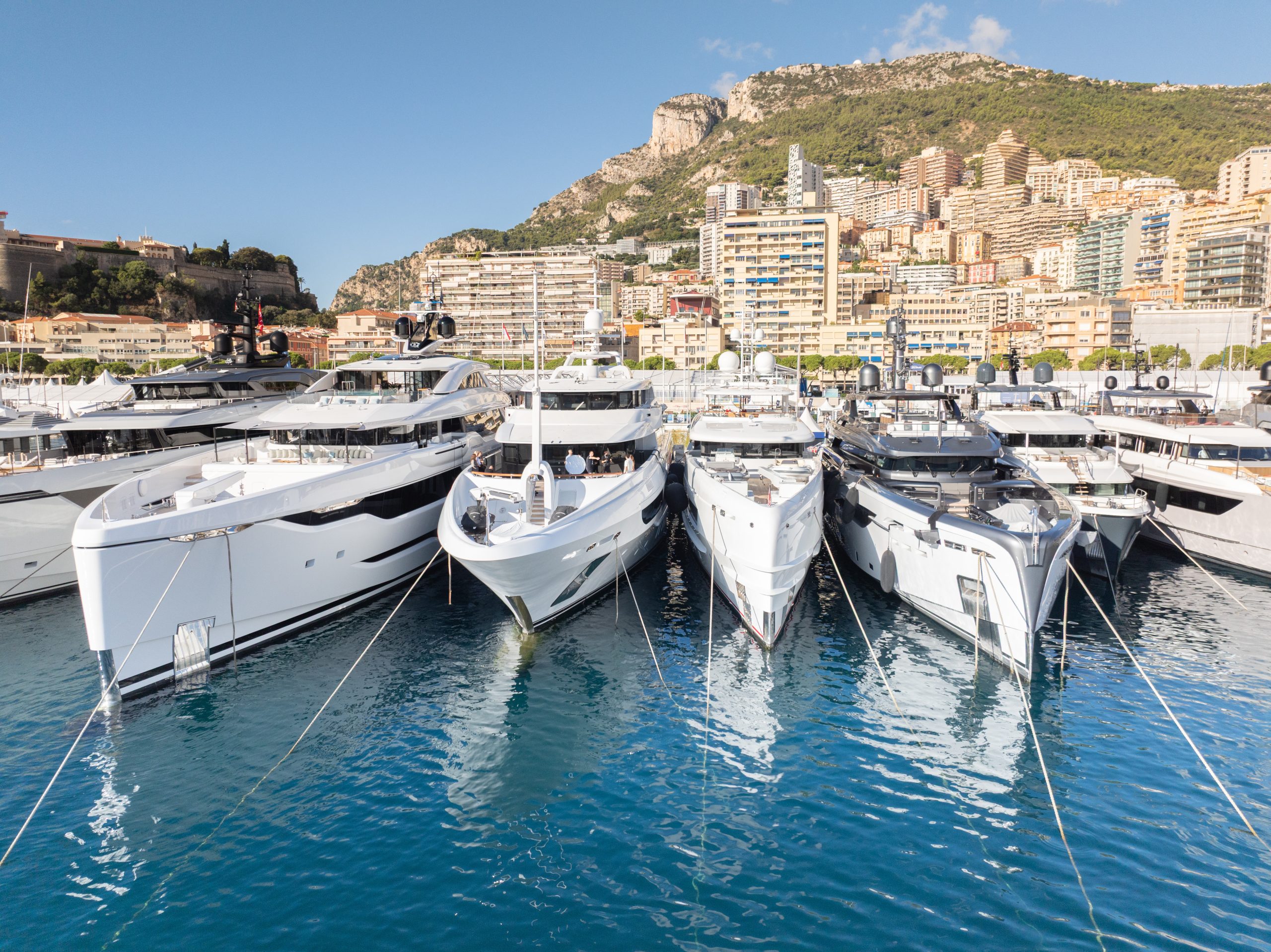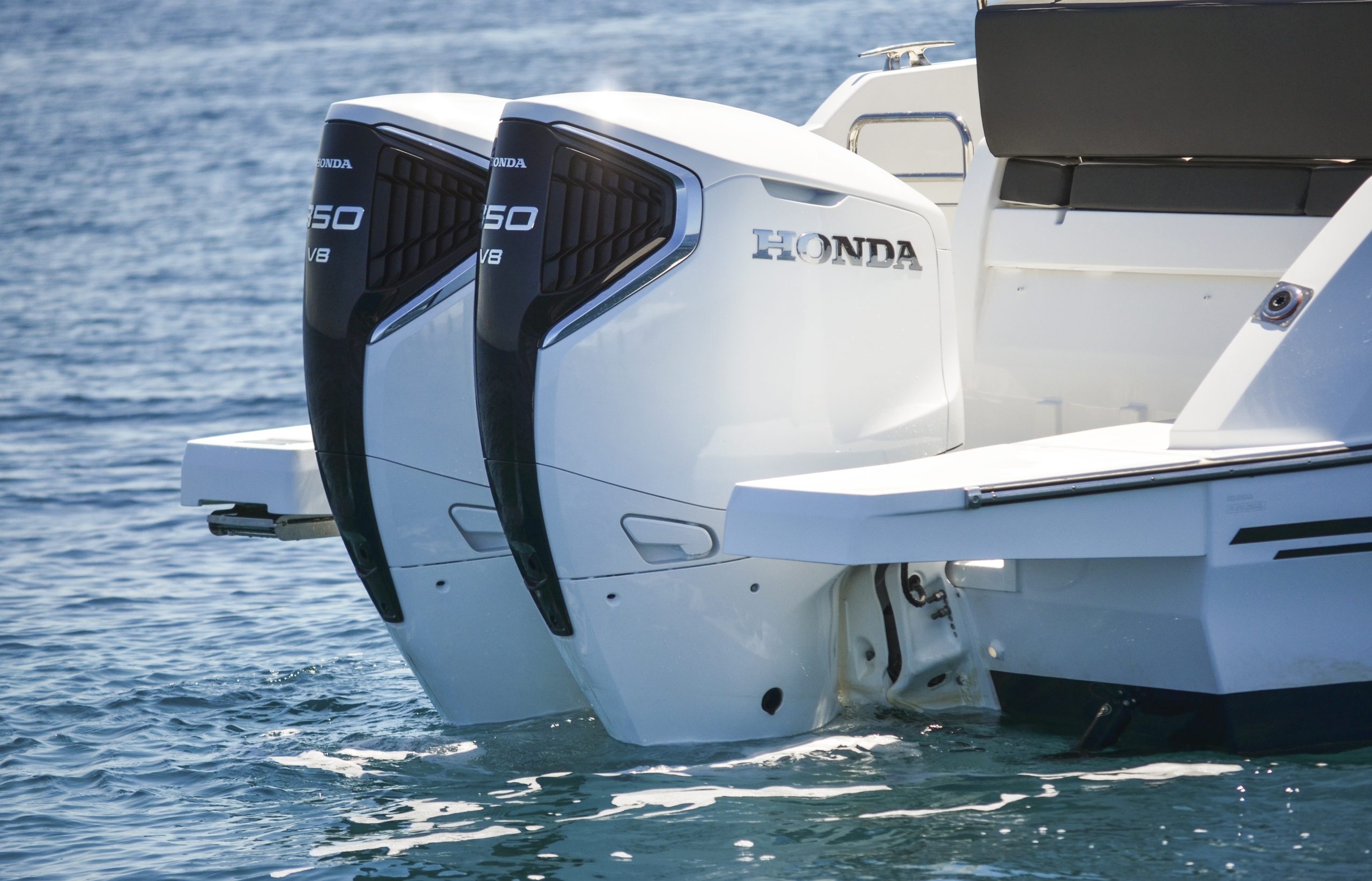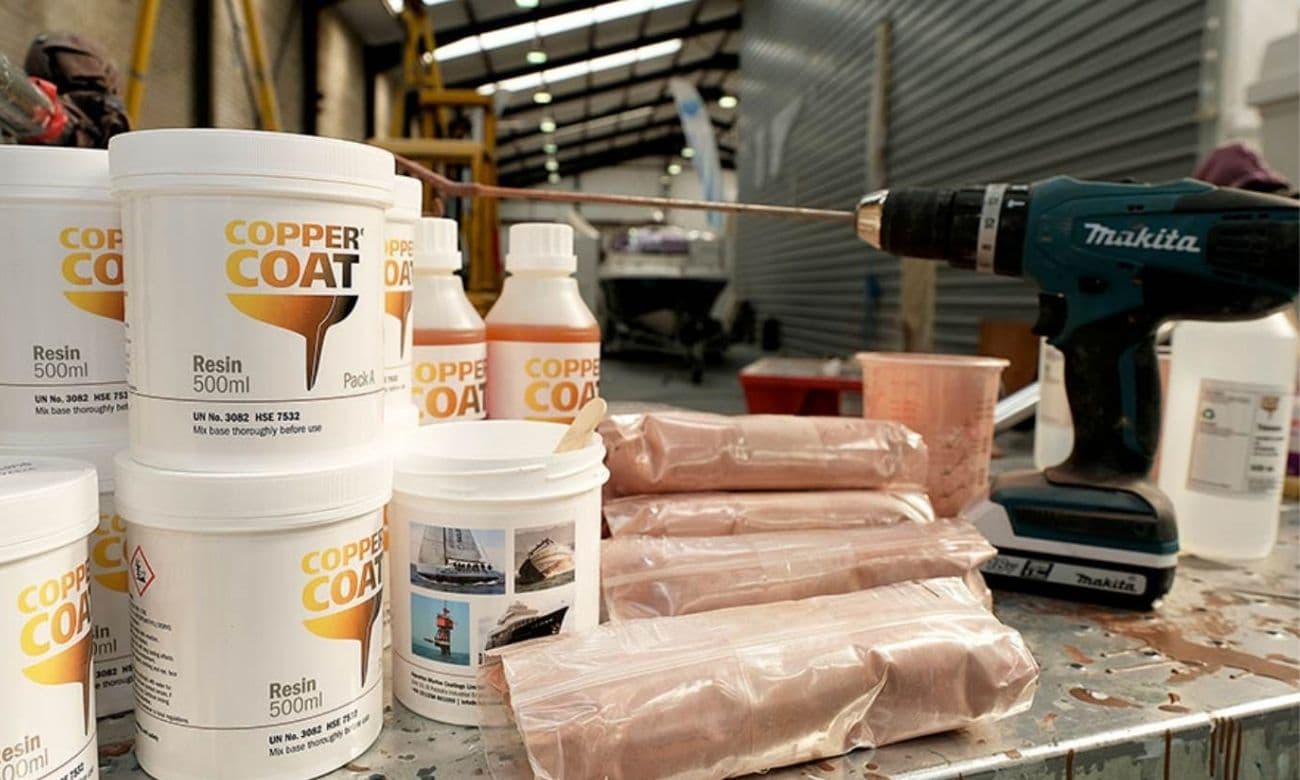
Fair means for antifoul
Saltwater Lady is the pertinent new name of the Fairline Phantom 38 recently purchased by Clive and Georgina Bartlett, respectively the non-executive director and managing director of Saltwater Stone. Among the myriad pressing tasks which had to be addressed while Saltwater Lady was laid up for the winter at Cobb’s Quay was a complete renewal of the antifoul on her hull.
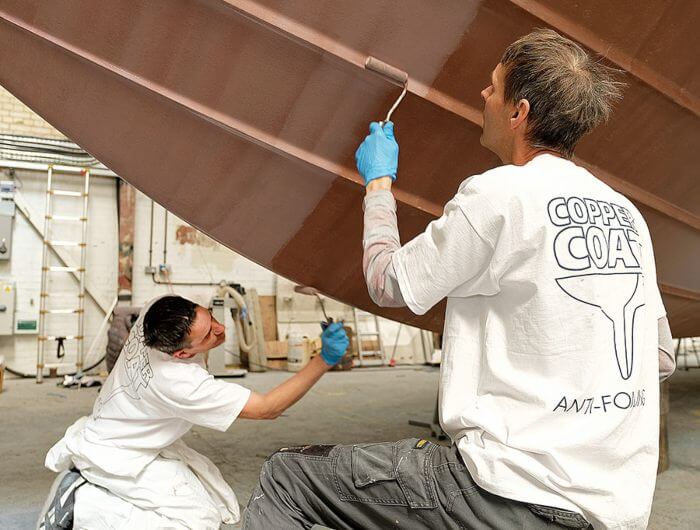
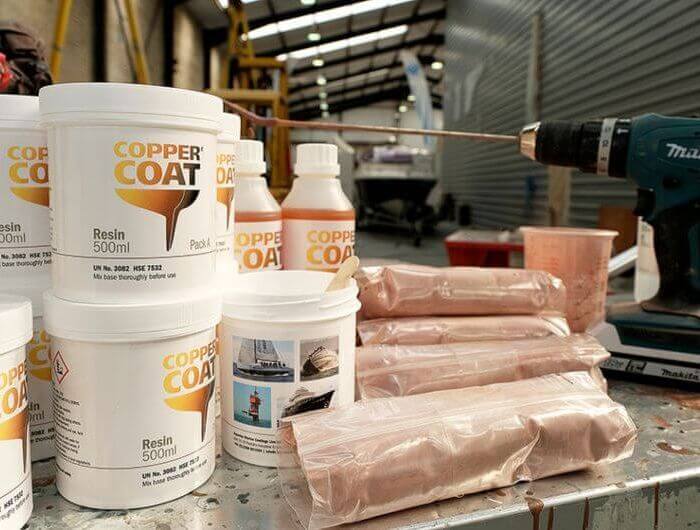
With Saltwater Lady’s hull stripped of her old, conventional antifoul – “a bloody huge job,” as Clive affirmed – and with all potential contaminants cleaned off, she was suitably prepared for the Coppercoat to be administered. The Coppercoat itself is mixed together from three constituent parts – a white epoxy resin base, brown-coloured hardener and ultra-fine, spherical copper powder. The epoxy resin base is poured into an appropriately sized container, and then the hardener is added to this. Once these constituents have been stirred together well, the copper powder can be applied, in a ratio of 2kg of copper powder to 1lt of resin. The key is to keep stirring until the mix is completely consistent, so that all the copper is evenly distributed and none of the powder settles on the bottom of the container.
Having mixed the Coppercoat to their satisfaction, Dan and Justin immediately set to work applying the antifoul – five coats in all – to Saltwater Lady’s hull. The coating is gradually built up using short-pile rollers: painting it on while the product is freshly mixed allows it to be applied smoothly and evenly, avoiding the runs and sags which can result if the coating is slathered on too thickly. “The Coppercoat’s going on really, really nicely,” Justin murmured approvingly, as the coats multiplied and the antifoul took on a glossy, lustrous, copper-rich appearance.
Saltwater Lady is now back in the water, with her bottom appropriately protected. We will obviously report back the next time she needs her antifouling reapplied – but you’d be well advised to prepare for rather a long wait.
